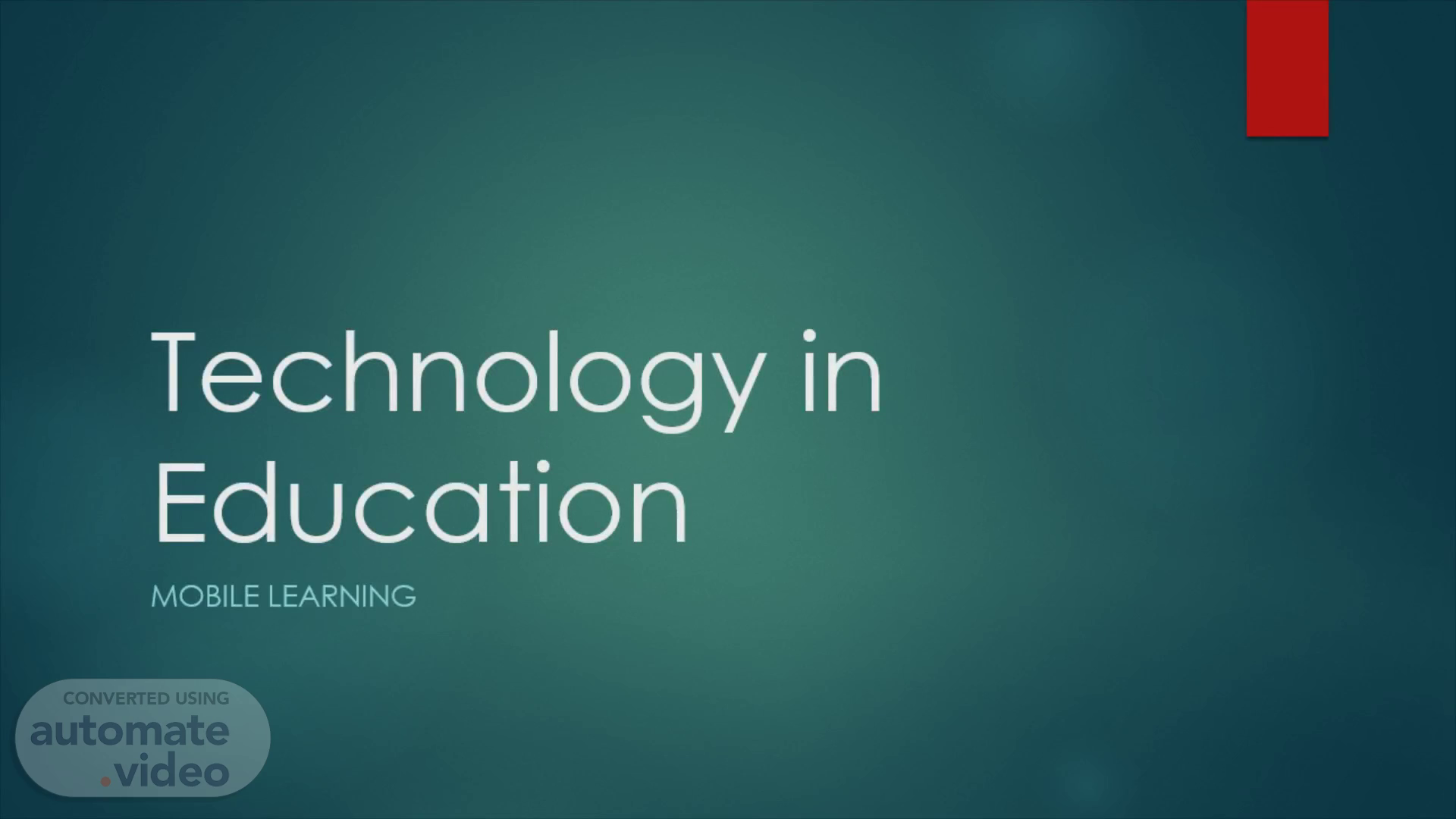
Technology in Education
Scene 1 (0s)
Technology in Education. Mobile Learning.
Scene 2 (6s)
Unit I Mobile Learning. Meaning and Definition of Mobile Technologies Use of Smart Phones in learning Smart Phones in Schools, Colleges and Universities Smart Phones in Open Schools, Colleges and Universities Mobile Phones in Distance Learning. Meaning of Mobile Technologies Portable Any device that carries with us to perform a wide variety of “tasks” Tasks to be performed via cellular phone Personal Digital Assistants (PDA) tablet, laptops, etc..
Scene 3 (26s)
Mobile Learning. It includes the use of a variety of transmission media such as: radiowave , microwave, infra-red, GPS and Bluetooth to allow for the transfer of data via voice, text, video, 2- dimensional barcodes and more. An electronic tele- communications device often referred to as cellular phone or cell phone. Mobile phones connect to a wireless communications network through radio wave or satellite transmissions. Most mobile phones provide voice communications, Short Message Service (SMS), Multimedia Message Service (MMS), games, cameras, video players, navigational systems, and also provide internet services such as web browsing and e-mail. They can be used over a wide area without a physical connection to a network..
Scene 4 (57s)
Mobile learning. Mobile learning (m-Learning) is defined as the provision of education and training on mobile devices, such as Personal Digital Assistants (PDAs), smart phones and mobile phones Mobile technology refers to devices that are both transportable and offer instantaneous access to information. Mobile Device Cell Phones E-book Readers Smartphones.
Scene 5 (1m 14s)
USE OF SMART PHONES IN LEARNING. Portability Accessibility Ease of use Apps Built in Features: Camera, Email, etc. Personalization Convenience.
Scene 6 (1m 28s)
Use of Smart Phones in Higher Education Learning.
Scene 7 (1m 45s)
Learning Management System (LMS). access to course content, power point slides of lectures and self-assessment tests etc. Such a provision is a useful addition to an already well-developed on-line service but cannot be regarded as something to which open schooling in developing countries might aspire in the short term Much more relevant to open schooling is the use of mobile telephones to supply purpose designed learning materials, with self-assessment in short modules..
Scene 8 (2m 6s)
Mobile Learning : Context specific activities. Several institutions report that mobile technologies are helpful in a range of context specific situations ranging from museum visits, to field work and project work. Learning out of the classroom is an example of the creative use of hand-held mobile technologies. The latest gadgets are opening up ever more possibilities for innovative teaching and learning. Drawing on functions such as GPS, camera, video, audio 3G internet access, which are often now incorporated within one device, teachers of all subjects and across all ages can capitalize on opportunities for using these technologies in fieldwork Support for disabled and institutionalized people The text size can be hard to read. Older learners and those with sight problems can struggle. Text to voice technology is improving albeit slowly, and needs to be considered where the learner constituency demands it..
Scene 9 (2m 42s)
MOBILE PHONES IN DISTANCE LEARNING. Cell phones can be used, in conjunction with printed materials to give and get feedback from lecturers and students, across learning games, simulations, self-assessment quizzes, podcasts A lecturer can send an SMS that is meant to trigger discussion on a particular topic and then encourage students to engage in a discussion. Students can form peer support study groups through cell phone social networks such as WhatsApp, Facebook and twitter Students can interact or get clarity on a difficult concept by checking it on the internet using cell phones. Podcasts and videocasts can be created to record, store and deliver content. Lectures and students can acquire different technological skills and competencies they need to understand and know how to use different mobile features and applications for teaching and learning..
Scene 10 (3m 16s)
Mobile Learning. There are many learning activities that can be supported by cell phones. Students can be asked to access certain Open Educational Resources (OER) material on the internet; and be asked to offer their own ideas and post them in their discussion forums or in conference sessions where they share them with their peers and lecturers. Students can take pictures, share it with others and hold discussions on how to solve a particular problem using different cell phone applications..